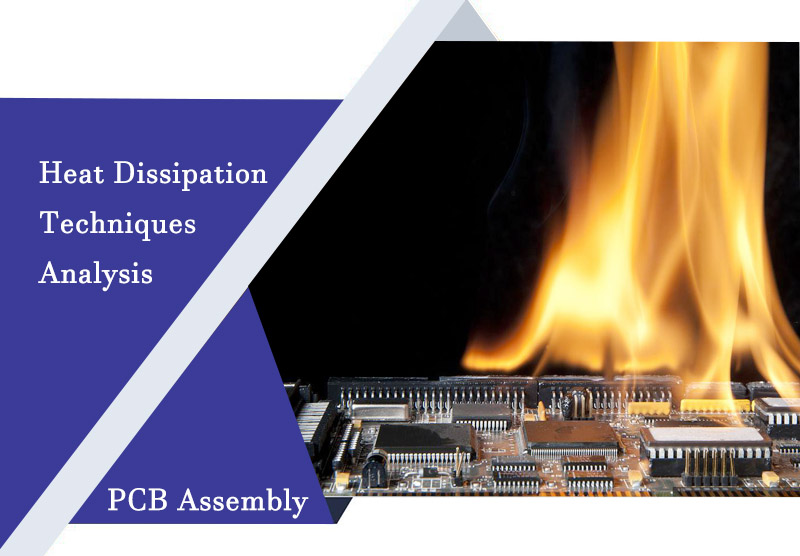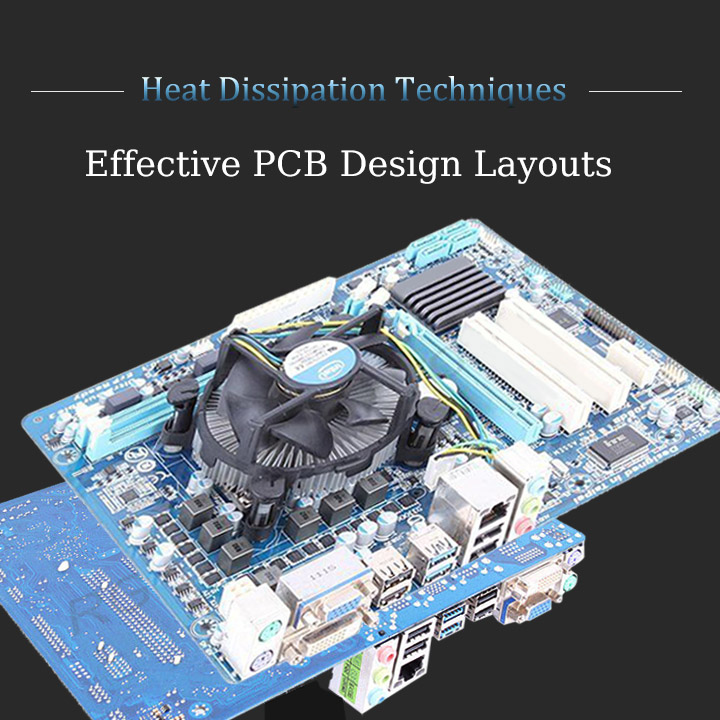
Heat dissipation is a crucial factor when considering designing circuit boards (PCBs) for various devices. By effectively dissipating heat, you can prevent the PCB from suffering performance issues or even failing completely due to excessive temperatures. Therefore, when investing in a PCB, make sure it has proper heat dissipation capabilities, which will guarantee not only avoiding overheating issues but also providing consistent and stable performance.
No matter what application your design is for, cooling should be considered an important task. A good heat dissipation design not only prolongs the life of the PCB and the entire device but also ensures the reliable operation of the device under various environmental conditions. Therefore, when investing in the design and manufacture of PCBs, it is important to make cooling a priority to ensure that your investment will provide excellent performance and reliability.
Learn more about why cooling is important and some tips for cooling your PCB.

PCB heat dissipation is becoming more and more significant in the design of modern electronic equipment. In electronic equipment, electronic components (such as integrated circuits, transistors, etc.) will generate heat during operation. This is because resistance will be generated when current passes through the components, and resistance will cause The energy loss is converted to heat energy. If this heat is not dissipated effectively, the component temperature will rise, which may lead to reduced performance, shortened life and even failure. In addition, the high temperature of the circuit board will also affect the surrounding environment of the equipment, and modern electronic equipment pursues miniaturization and high integration, which causes components to integrate more functions in a limited space, thereby generating more heat.
Therefore, a reasonable PCB heat dissipation design can ensure stable operation of the device, prolong life, improve performance reliability, and reduce maintenance costs. Fully considering heat dissipation in the design, and selecting appropriate heat sink materials and methods can effectively deal with the heat generated by electronic components and maintain the overall healthy operation of the equipment.
As electronic products become more powerful and PCBs become smaller, heat dissipation is more important than ever. Here are some proven techniques:
High-power consumption components (such as large integrated circuits, amplifiers, etc.) will generate more heat. The higher the power consumption, the greater the cooling requirements. The operating temperature of the PCB should be controlled within the rated temperature range of the component to ensure that the performance and life of the component are not affected.
If the ambient temperature is already high, the PCB must be able to dissipate heat effectively to avoid overheating. The work of PCB board should take into account the fluctuation of ambient temperature to ensure stable operation in different working environments.
PCB boards may generate different amounts of heat under different workloads and operating modes. For example, continuous high-load work may lead to greater heat generation.
The rationality of PCB design layout will also affect the thermal relief requirements. The poor layout between components can lead to a concentration of hot spots, adding to the thermal relief challenge. For example, reasonably separate high-power consumption components from low-power consumption components, reduce local temperature rise by dispersing heat and avoid mutual influence of high-power consumption components.
According to the power consumption and space of the PCB, select the appropriate type of heat sink, which can be a passive heat sink (heat sink, fins) or an active heat sink (fan, cooler). It is also necessary to choose a material with good thermal conductivity and ensure that the heat sink is sized to effectively dissipate the heat. Ensure good contact between the heat sink and components to maximize heat transfer.

PCB Thermal Relief Guidelines for Effective PCB Design Layouts
Choose a circuit board material with good thermal conductivity to facilitate heat transfer. It also needs to be considered that the circuit board material has sufficient insulating properties to prevent problems caused by grounding the heat sink. High-power applications typically require materials with higher thermal conductivity, while lower-power applications can choose materials with suitable insulating properties
· Metal Core PCB (MCPCB)
This type of PCB has a metal base (usually aluminum or copper) as the heat-dissipating layer. Metal bases have good thermal conductivity, effectively transferring heat from components to the external environment. They are often used for heat-intensive electronic components such as LED lighting and power amplifiers.
· Copper Substrate
Copper substrates also possess good thermal conductivity, although they are less thermally conductive compared to metal core PCBs. However, copper substrates have higher mechanical strength, making them suitable for applications requiring structural stability.
· Ceramic Substrate
Ceramic substrates exhibit excellent insulation properties and high thermal conductivity. They are used in high-frequency and high-power circuit designs, such as microwave circuits and radio frequency (RF) circuits.
· Polymer Substrate
Polymer substrates are typically used in lower-power electronic devices. While their thermal conductivity is relatively poor, proper thermal relief design can sometimes meet the thermal relief requirements.
· Composite Material Substrate
Composite material substrates combine different types of materials to achieve a balanced performance. For instance, combining metal with insulating materials can balance thermal conductivity and insulation performance to some extent.
Increasing the heat dissipation area on the PCB can disperse the heat and reduce the local temperature. It can be realized by increasing the size and quantity of the heat sink or by cooling fins.
Installing a heat sink on the PCB can guide the heat to the external environment. Choose the proper location and material to maximize the effectiveness of the heat sink.
Use thermal simulation tools to predict thermal distribution and temperature changes in the PCB. This can help you identify potential thermal issues during the design phase and optimize cooling solutions.
Active cooling devices such as fans and coolers are added to the PCB design to provide additional airflow and cooling effects.

Electronic Cool Fans are Designed for Printed Circuit Boards (PCBs)
Arrange temperature sensors on the PCB to monitor temperature changes in various areas. This can help you understand the distribution and change of hotspots. According to the temperature distribution, adjust the layout of the components to avoid the concentration of hot spots and balance the temperature.
Use thermal simulation software to simulate the PCB and predict the temperature distribution under different load conditions. This can help you identify possible thermal issues and evaluate the effect of different thermal solutions.
Use an infrared thermal imager to take a thermal image of the PCB. This visually shows hot spots and temperature distribution, helping you locate thermal issues.
Carry out the actual heat dissipation test, place the PCB under simulated working conditions for testing and measure the temperature change of each area. This verifies the accuracy of the thermal simulation results.
Test different heat dissipation materials and measure their thermal conductivity to select the most suitable material.

Poor Heat Dissipation will Directly Burn The Printed Circuit Board
We regularly provide consulting services to customers and provide PCB solutions with excellent thermal performance. Fully aware of the importance of heat dissipation on PCBs, we exercise caution during the prototyping and engineering phases of our collaboration with our customers. This ensures that every PCB we provide to our customers is closely matched to its application requirements and is resistant to overheating issues. By in-depth understanding of customer needs and providing them with cost-effective, high-quality PCB solutions, we are confident that we can make a significant contribution when helping you.
Learn more about our PCB capabilities today. If you have any questions or need a free quote, please do not hesitate to contact us.
